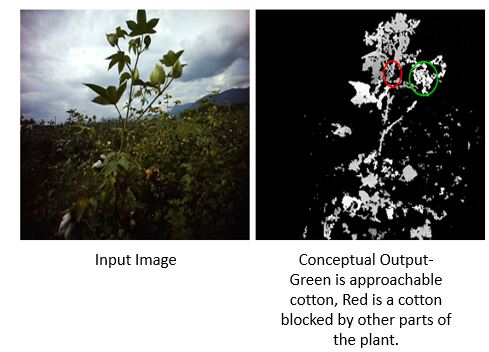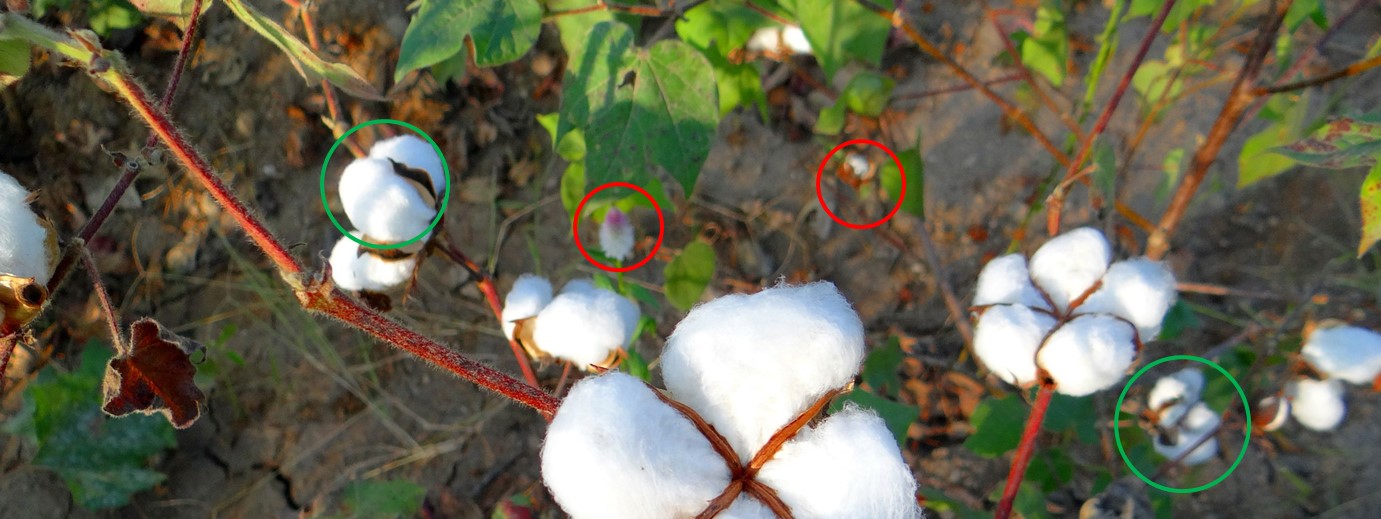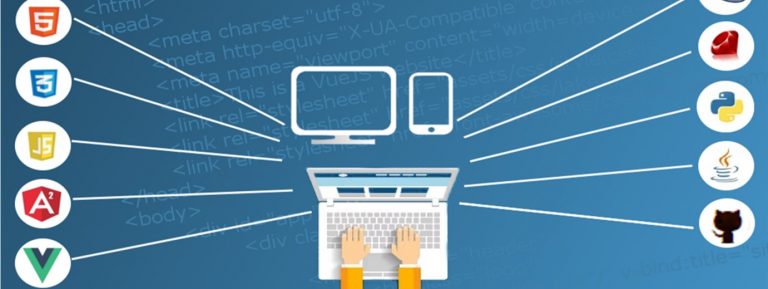The Problem Statement
Aiming to reduce the labor-intensive tasks at cotton picking farms alongside maintaining the quality and human-picking speed, the client wanted to enhance the functionality of its pre-built cotton-picking robotic arm. Driving the vision of mechanizing farm tasks, the client approached KritiKal Solutions to devise an OpenCV based stem detection algorithm that would aid the Robotic Arm in detecting the branches of the cotton plant and maneuver its movement suitably to pluck the bloomed cotton.
Screenshots

The Solution
To develop an algorithm that would work as a complement to the existing robotic arm built by the client itself, KritiKal Solutions employed a team of computer vision specialists and came up with the desired algorithm within a time span of two months. During the first phase of development of a robust stem detection module, our team identified the feasible image pairs from real field data set and generated as many as a simulated dataset for further processing.
For the accurate localization of stems in a stereo pair of images, we identified the stem regions leveraging the HSV based color segmentation and contour-based filtering in MATLAB. Herein, the HSV based filtering was used for color segmentation while the contour filtering was used to derive depth information of the stems. After this process, disparity map was computed to get the rectified mapping of stems on stereo images.
Ensuring the arm to better localize the stem having bloomed cotton, our algorithm experts generated the 3D coordinates of the branches so that they can be populated in the “scenery of the robotic arm” and assist in the movement of the arm. Also, we followed outlier rejections processes to eliminate leaves and small stems, thereby improving the arm reachability.
- Generation of the 3D co-ordinates of the branches
- Calculation of Depth information from the Stereo Image Pair and Camera Parameters
- Color based segmentation, Active Contour methods, geometric constraints to eliminate leaves and small stems
Benefits Delivered
KritiKal’s developed robust Stem Detection Module undeniably helped the client in augmenting its arm system to support its sole purpose of picking the bloomed-cotton from the plant. Our algorithm worked well in processing stereo pair of images and then calculating the 3D coordinates for better localization of the stems from the plant. In overall, we successfully enhanced & improvised the reachability of the robotic arm by optimizing its path through our intelligent module.
Technology Used
- Computer Vision
- Image Processing
- 3 D Vision



